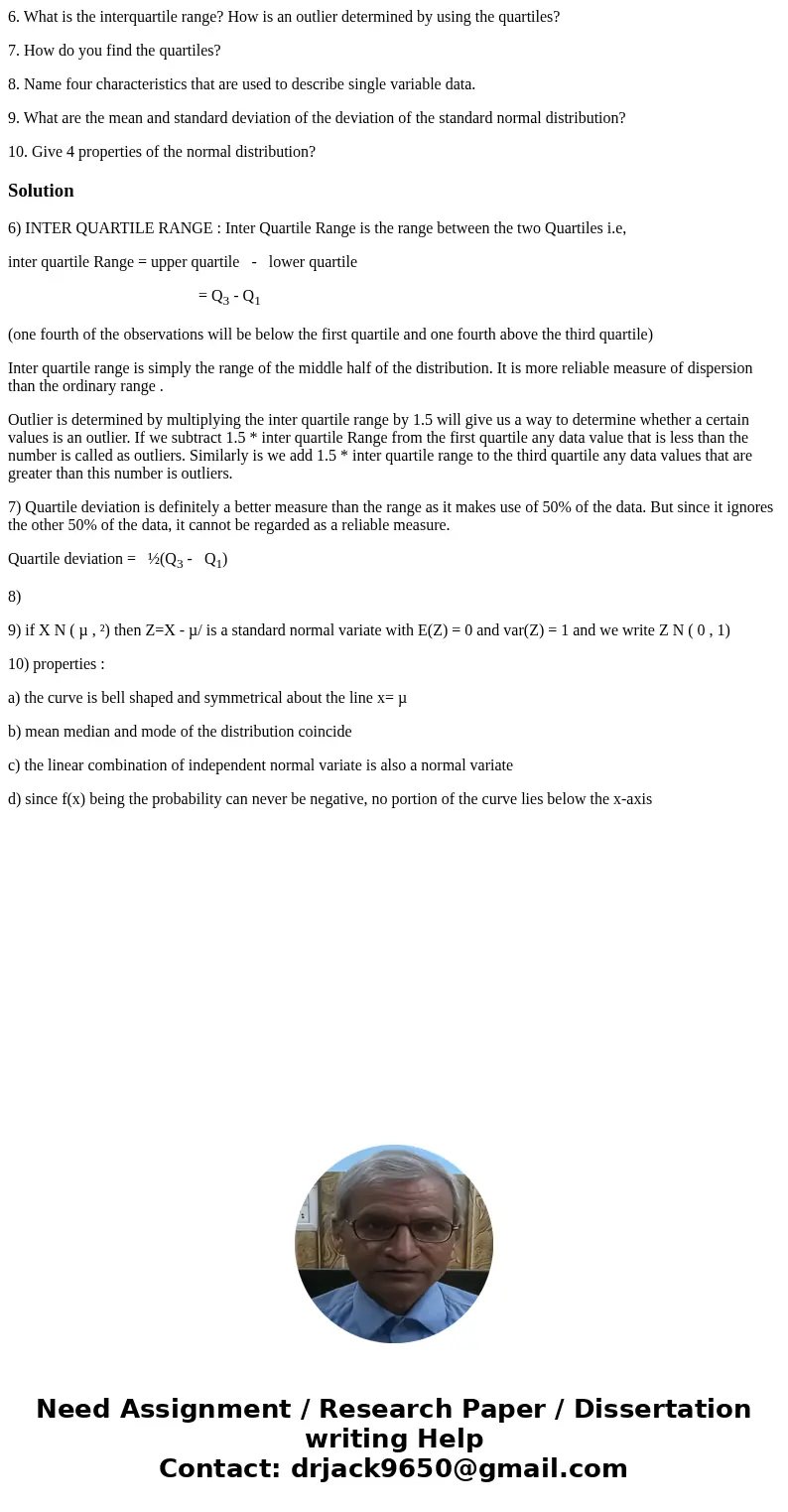6 What is the interquartile range How is an outlier determin
6. What is the interquartile range? How is an outlier determined by using the quartiles?
7. How do you find the quartiles?
8. Name four characteristics that are used to describe single variable data.
9. What are the mean and standard deviation of the deviation of the standard normal distribution?
10. Give 4 properties of the normal distribution?
Solution
6) INTER QUARTILE RANGE : Inter Quartile Range is the range between the two Quartiles i.e,
inter quartile Range = upper quartile - lower quartile
= Q3 - Q1
(one fourth of the observations will be below the first quartile and one fourth above the third quartile)
Inter quartile range is simply the range of the middle half of the distribution. It is more reliable measure of dispersion than the ordinary range .
Outlier is determined by multiplying the inter quartile range by 1.5 will give us a way to determine whether a certain values is an outlier. If we subtract 1.5 * inter quartile Range from the first quartile any data value that is less than the number is called as outliers. Similarly is we add 1.5 * inter quartile range to the third quartile any data values that are greater than this number is outliers.
7) Quartile deviation is definitely a better measure than the range as it makes use of 50% of the data. But since it ignores the other 50% of the data, it cannot be regarded as a reliable measure.
Quartile deviation = ½(Q3 - Q1)
8)
9) if X N ( µ , ²) then Z=X - µ/ is a standard normal variate with E(Z) = 0 and var(Z) = 1 and we write Z N ( 0 , 1)
10) properties :
a) the curve is bell shaped and symmetrical about the line x= µ
b) mean median and mode of the distribution coincide
c) the linear combination of independent normal variate is also a normal variate
d) since f(x) being the probability can never be negative, no portion of the curve lies below the x-axis

 Homework Sourse
Homework Sourse